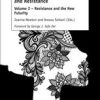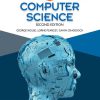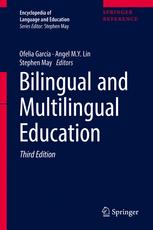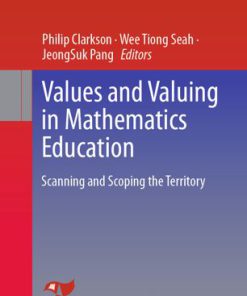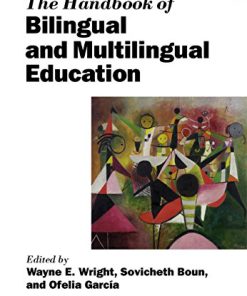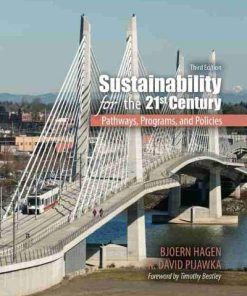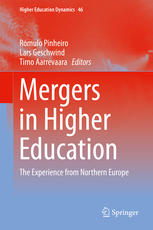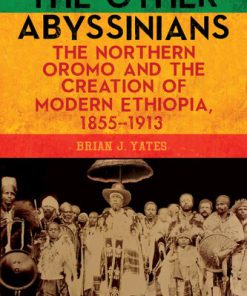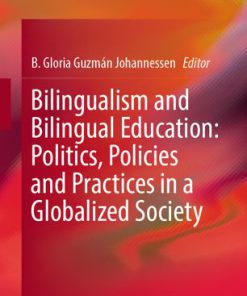History of Bilingual Education in the Northern Territory People Programs and Policies 1st Edition by Brian Clive Devlin, Samantha Disbray, Nancy Regise Friedman Devlin ISBN 9789811020780 9811020787
$50.00 Original price was: $50.00.$25.00Current price is: $25.00.
History of Bilingual Education in the Northern Territory People Programs and Policies 1st Edition by Brian Clive Devlin, Samantha Disbray, Nancy Regise Friedman Devlin – Ebook PDF Instant Download/Delivery: 9789811020780 ,9811020787
Full download History of Bilingual Education in the Northern Territory People Programs and Policies 1st Edition after payment
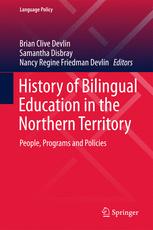
Product details:
ISBN 10: 9811020787
ISBN 13: 9789811020780
Author: Brian Clive Devlin, Samantha Disbray, Nancy Regise Friedman Devlin
History of Bilingual Education in the Northern Territory People Programs and Policies 1st Edition Table of contents:
1 A Thematic History of Bilingual Education in the Northern Territory
A Thematic History Told Through an Ethnographic Lens
The Northern Territory: History and Languages
Parts and Chapters
References
2 A Glimmer of Possibility
Introduction
The 1950 Agreement
The Decision to Introduce Bilingual Education in the Northern Territory
Justification for the Decision
The ‘Bilingual Unit’ Is Set up in Darwin
Starting Out
Missionary Linguists Provided Considerable Assistance
Self-determination
Conclusion
Acknowledgments
References
3 Reflecting on Team Teaching
Developing Team-Teaching in Arnhem Land
Developing a Northern Territory Approach to Team Teaching
References
4 ‘Bilingual Time’ at Willowra: The Beginnings of a Community-Initiated Program, 1976–1977
Introduction
Willowra: The Place and the Community
The Historical Context
What Was at Stake?
1976–1977
Conclusion
References
Archival correspondence
5 Lessons Learned from Bilingual Education
Lesson 1
Lesson 2
Lesson 3
Lesson 4
Lesson 5
Lesson 6
References
6 Starting Out at Bamyili: Factors Specific to the Development of the Kriol Program
The Consultative Committee
First Steps
Language Status
Kriol and Variation
Variation and Orthography
Designing a Program
Teaching First Language Literacy
Teaching English in the Bilingual Program
And Finally, the Program Began
References
7 Boom and then Bust: Lessons Learnt from My Time Teaching in Three Bilingual Schools in the Norther
Introduction
Story 1: Milingimbi
Lessons Learnt
Story 2: Willowra
Lessons Learnt
Story 3: Yirrkala
Lessons Learnt
Discussion
Conclusion
References
8 The Policy Framework for Bilingual Education in Australian Indigenous Languages in the Northern Te
Introduction
The Indigenous Languages in the History of Australia
Language Policy in Australia
Beginnings of Bilingual Education in the Northern Territory
Pressures on Policy
Conclusion
References
9 Consolidation, Power Through Leadership and Pedagogy, and the Rise of Accountability, 1980–1998
Introduction
Consolidation and Developing Bilingual Education Expertise
Power Through Pedagogy and Leadership
Power Through School Policy and Practice
Teachers and Pedagogy
Power and Local Curriculum
Accountability and Shifting Policy
Conclusion
References
10 The Development of Successful Bilingual, Biliterate and Bicultural Pedagogy: Place for Tiwi Teach
Introduction
The Bilingual Teaching Context
Intercultural Team Teaching
My Role as Monolingual English-Speaking Teacher in the Bilingual, Bicultural Teaching Team
Empowering English for Bilingual Competency in Academic Learning and the Development of Walking Talk
An Active Role for HL in Learning and for Tiwi Teachers in Teaching
From Two Parallel Teaching Programs to a Bilingual, Bicultural Teaching Program
Closing
Final Word
References
11 Developing Local Curriculum Materials—Learning Metaphors, Insightful Collaborations, Community
Introduction
Milingimbi 1972
Bilingual Education at Milingimbi
Aboriginalisation at Yirrkala 1980s
References
12 The Quest for Community Control at Yirrkala School
References
13 Language Revitalisation in a Bilingual Program—The Case of Numbulwar School
Introduction
Language Context
Historical Background
People in the Program
Securing Positions and a Physical Space for the Program
Strengthening Skills
Strengthening Communication
Developing the Program
Strengthening the Teaching-Learning Cycle
Work Towards a Local Curriculum
System Level Recognition and Accountability
Access to a curriculum for language revitalisation
Assessment
Biannual Program Reviews
The Importance of Oracy
Oral Language Teaching and Learning Strategies
Kriol
Concluding Remarks
Postscript 2009–2015
References
14 Threatened Closure: Resistance and Compromise (1998–2000)
Overview
Introduction
The Link Between Bilingual Education and Human Rights
The Decision
Justification for the Decision
Reactions to the December 1998 Decision
The NT Government’s Response
Conclusion
References
15 Defending Our Program at Wadeye
Tobias Ngardinithi Nganbe ‘A Positive Learning—A Step Forward in Community’
What We Know About Mother Tongue Development
References
16 Sources of Evidence on Student Achievement in Northern Territory Bilingual Education Programs
Introduction
Which Perspective Counts When We Measure a Program’s Success?
Two Claims Regarding Bilingually Educated Students’ Achievement in Literacy and Numeracy
Levels of Evidence
Conclusion
References
17 Policy Change in 2008: Evidence-Based or a Knee-Jerk Response?
Introduction
Rationale for This Chapter
Bilingual Programs as They Were at the Beginning of 2008
The First Release of National Student Assessment Results in September, 2008
The Government’s Decision to Dismantle the Step-Model Bilingual Programs
Data Used to Justify the Government’s Decision
Response by the Northern Territory Department of Employment, Education and Training
Northern Territory Government Policy in 2010
Reactions to the NT Government’s Decision (October, 2008)
Conclusions
References
18 The Areyonga Case: Utulu Kutju Nintiringanyi ‘Learning Together’
Introduction
The Aims of Bilingual Education
Closing the Gap
The Influence of National Testing
Achievement Timelines for Indigenous EAL/D Students
Areyonga Community’s Reaction
Meeting with the Minister
Different Perspectives of Educational Goals and Aspirations
The Importance of Perspective
‘The Human Rights and Equal Opportunity Commission Complaint’ by Neil Bell
A Resolution
References
19 Policy and Practice Now
Introduction
Languages and Education Policy Now
The Indigenous Education Review and Languages in Education
Teaching and Learning in and Out of Schools
Partnerships with Schools
Out of School Learning Spaces
Conclusion
References
20 Starting Out at Yuendumu School—Teaching in Our Own Language
Part 1
Part 2 by Wendy Baarda
The First Warlpiri Books
Some Set Backs
Jeannie Egan
The Present
Conclusion
References
21 Stories from Central Australian Indigenous Community Schools in the Pintupi-Luritja Region
Foreword
Stories
References
22 Yipirinya School: That Generation, This Generation
The Early Aims and Aspirations of Yipirinya School
Generational Change
The Mission Generation
The Assimilation Generation
The Emergence of a New Kind of Community
Anwernekenhe Itirrentye Kaltyelenthetyeke—Teach Our Culture, Teach Our Way, the Yipirinya Way
‘Moving Freely with Knowledge and Confidence in Both Aboriginal and European Society’
Learning for What Future?
Bush Life
Town Life
Conclusion
Acknowledgments
References
23 The Program at Wadeye, Past and Present
Part 1 by Deminhimpuk Francella Bunduck
Part 2 by Teresa Ward
The Past
The Present
The Future
24 We Did It! A Case Study of Bilingual/Bicultural Education at Ltyentye Apurte Catholic School
Introduction
A Brief Background to the School and Community
Changes to Curriculum Policy for Indigenous Students—The Introduction of Bilingual Education
Developing a Bilingual Teaching Team
Arrernte Teacher Training and the Intelyape-Lyape Curriculum
Introduction of a Model 1 Bilingual Program at Ltyentye Apurte School
Another Model
The Current Situation
Conclusion
References
25 Forty Years on: Seeking a Way for the Future—Dhawal’yurr Yuwalkku Dhukarr. Reflections on Bil
Introduction
Historical Context
Starting Out
Language of Instruction
Teaching English as a Second Language
Curriculum Development
Professional Development and Training
The Between Years
Forty Years on and Looking to the Future
Curriculum
Team Teaching
The Teacher-Linguist Position
Professional Development
Management and Leadership
School Council
Conclusion
References
26 Reminiscences: Working Together in a Bilingual Classroom
Nancy’s Story
Gapany’s Story
Nancy’s Note
27 Reflections on My Years at Elcho and Mäpuru (1978–2015)
Starting Out and Adapting
Getting to Know the Yolŋu People
Attempts to Make Schooling More Meaningful
Yolŋu-Initiated Reforms
Teaching Mathematics
The Hidden Curriculum and the Problem with Just Teaching in Basic English
Schooling in the Smaller Townships (also Referred to as Homelands)
Mäpuru
Stories About How Mäpuru School Is Making a Positive Difference
A Practical Example of Working Bilingually and Biculturally
Reference
28 Digital Futures for Bilingual Books
References
Afterword
The Legitimacy of Bilingual Education as a Policy Option
The Common Underlying Proficiency or Interdependence Hypothesis
Causes of Underachievement and High-Impact Educational Responses
Conclusion
References
Glossary
Places Index
NT Languages Index
Other Languages Index
Subject Index
People also search for history of bilingual education in the united states in the Northern Territory People Programs and Policies 1st Edition:
history of bilingual education in the united states
a brief history of bilingual education in the united states
history of bilingual education in california
history of bilingual education in the philippines
Tags:
Brian Clive Devlin,Samantha Disbray,Nancy Regise Friedman Devlin,Bilingual Education
You may also like…
Education Studies & Teaching - School Education & Teaching
Bilingual and Multilingual Education 3rd Edition Ofelia García
Uncategorized
Values and Valuing in Mathematics Education Scanning and Scoping the Territory Philip Clarkson
dictionaries & phrasebooks
The Handbook of Bilingual and Multilingual Education 1st Edition Boun
Science (General)
Education Studies & Teaching
Education Studies & Teaching
Mergers in Higher Education: The Experience from Northern Europe 1st Edition Rómulo Pinheiro
Politics & Philosophy - Government & Politics
Education Studies & Teaching
Education Studies & Teaching - School Education & Teaching


